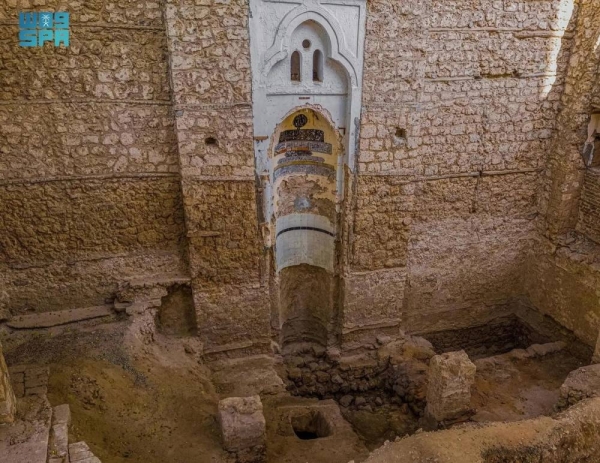Saudi: 1200-year Old Architectural Patterns Of Othman Bin Affan Mosque Discovered In Historic Jeddah

The Jeddah Historic District Programme (JHDP) announced the discovery of architectural patterns in the Othman bin Affan Mosque that date back 1,200 years.
The announcement was made as part of revealing the results of the first phase of the Archaeology Project in Historic Jeddah. The archaeological studies resulted in understanding the historical architectural patterns of the mosque, and the discovery of hundreds of remains of archaeological materials, some of which date back to approximately 1200 years, the Saudi Press Agency reported.

The archaeological studies revealed successive restoration operations on the mosque during its long history, as all previous construction stages of the mosque belonged to the traditional architecture style known in Jeddah at that time, which was represented by an open courtyard and a covered prayer hall, while the last stage of construction, which was represented in its current form, was excluded. It was built approximately in the 14th century AH, corresponding to the late 20th century, while the mihrab and the area of the mosque remained as they were during the period spanning over 1000 years.
Studies have confirmed that most of the restoration and renovation operations in the mosque were carried out based on the height of the floor and its patterns, which varied between clay tiles, plaster and traditional tiles, while the use of tiles continued for 400 years. Studies indicate that since the end of the Mamluk era (15-16th century), the floor masons have reused the same tiles extending back to the 14th century AH at each stage of the restoration work.
Studies indicate that the construction of the ground water tank under the mosque was one of the most important changes that occurred in the mosque, as archaeologists found ground tanks filled with pure water that were left by those in charge of building them about 800 years ago. Information also showed that the construction of ground tanks was a common issue in historic Jeddah due to the city’s limited water supply.
Thousands of archaeological materials discovered in the Othman bin Affan Mosque summarise 1,200 years of its history, as remains of Chinese porcelain in white and blue were found dating back to the 11th century AH (17th century AD), in addition to Chinese celadon vessels glazed in grey and green dating back to the 4th and 6th centuries AH, and white, green and yellow glazed pottery fragments dating back to the 3rd and 4th centuries AH, as they are considered among the oldest artefacts discovered in the mosque, according to experts’ estimation.
It is noteworthy that the archaeological discoveries in the Othman bin Affan Mosque come within a group of archaeological discoveries announced by JHDP as part of the results of the first phase of the Archaeology Project, which resulted in the discovery of 25,000 artefact fragments from four archaeological sites in the Historic Jeddah. It represents a qualitative leap in understanding the city’s cultural legacy, highlighting archaeological sites with historical significance, caring for them, and enhancing their historical status.

The JHDP announced recently that as many as 25,000 fragments of artefacts dating back to the Islamic caliphates during the first two centuries of the Hijri Calendar, corresponding to the 7th to 8th centuries AD, were discovered in the Jeddah Historic Area. The archaeological discoveries were announced as part of the Historic Jeddah Revival Project, initiated by Crown Prince and Prime Minister Mohammed bin Salman.
According to the JHDP, the excavation project started in January 2020 with exploratory studies and a geophysical survey. The goal was to unveil the historical significance of four key locations: Othman bin Affan Mosque, Al-Shona, a segment of the Northern Wall, and Al-Kidwah. This archaeological endeavour falls within the purview of the Jeddah Historic District Programme. The project aims to preserve national antiquities and archaeological sites, uncover the rich history of the Kingdom, and promote Historic Jeddah as a cultural and tourist destination, in line with the Saudi Vision 2030





